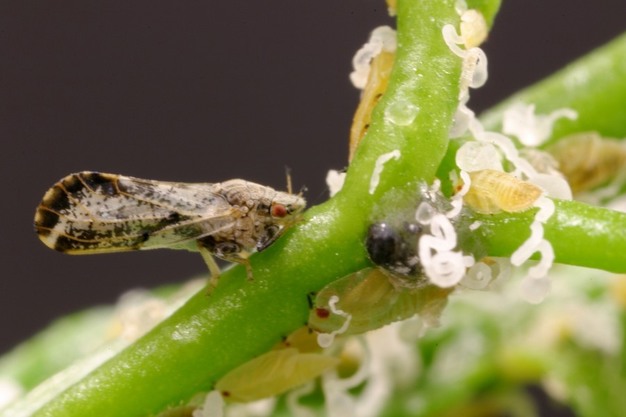Florida's citrus industry continues to face challenges from citrus greening. Residential citrus trees, where the disease was first detected in the state, can act as reservoirs for Asian citrus psyllids if they are not properly managed.
To strengthen disease prevention efforts, the University of Florida's Institute of Food and Agricultural Sciences (UF/IFAS) is conducting workshops to teach residents how to identify, monitor, and manage citrus greening and psyllids. A recently published study describes one such program in North Florida, where citrus greening and psyllids are less common but where a cold-hardy citrus industry is emerging.
 © Michael Rogers, UF/IFAS
© Michael Rogers, UF/IFAS
Among surveyed participants, 86% expressed willingness to manage psyllids, and 89% agreed to remove infected trees. "This is the kind of behavior that can really help mitigate the disease," said study co-author Xavier Martini, UF/IFAS associate professor of entomology.
Martini emphasized the importance of protecting North Florida groves. "The vast majority of these cold-hardy citrus groves are free of citrus greening and are therefore flourishing. We want this burgeoning industry to develop and be protected, so we have to be proactive," he said.
The workshops were held in six counties: Bay, Columbia, Gadsden, Jefferson, Leon, and Santa Rosa. Participants completed surveys rating their knowledge of citrus greening before and after the sessions. Results showed that 93% reported an increase in knowledge of monitoring and management practices.
The study also confirmed earlier UF/IFAS research indicating most residents cannot identify live psyllids, though many recognize them in photographs. Identification skills improved after participants examined preserved specimens under a microscope. "As entomologists, we tend to prefer high-quality images of insects, but they don't always reflect what homeowners experience in their garden," Martini said. "These workshops taught me the importance of including real specimens instead of just pictures."
While many participants were willing to remove infected trees, fewer expressed interest in adopting other recommended measures. Only 20% said they would use protective mesh bags on their citrus trees, and 35% said they would apply UV-reflective mulch. According to Martini, these results reflect cultural and aesthetic preferences that must be considered when developing integrated pest management plans for homeowners.
"We want to be sure to propose tools that work for them," Martini said. "The best we can do is continue to share these two methods and explain that they are relatively cheap and require low maintenance."
For more information:
Megan Winslow
University of Florida
Tel: +1 352 294 3313
Email: [email protected]
www.blogs.ifas.ufl.edu
